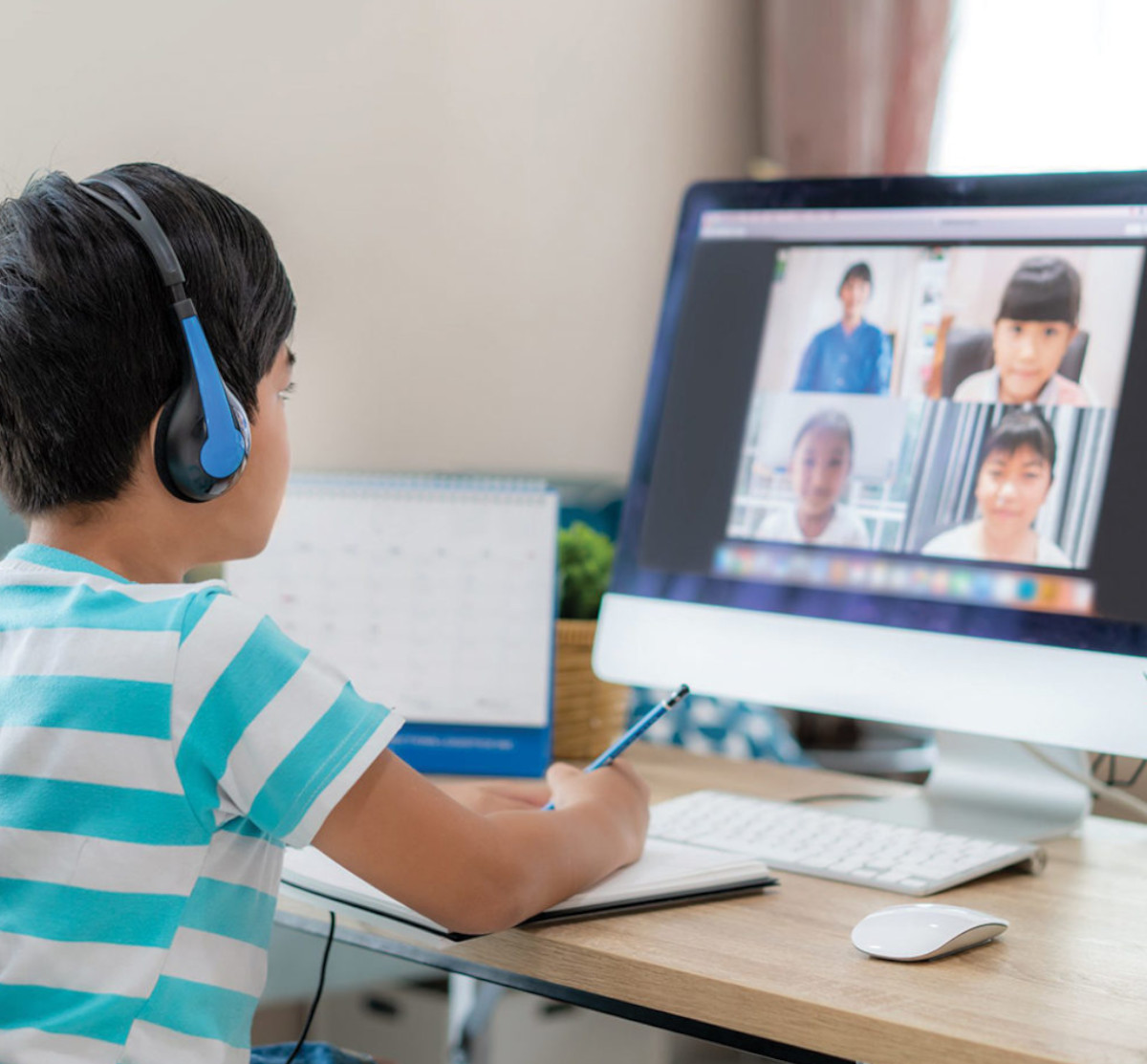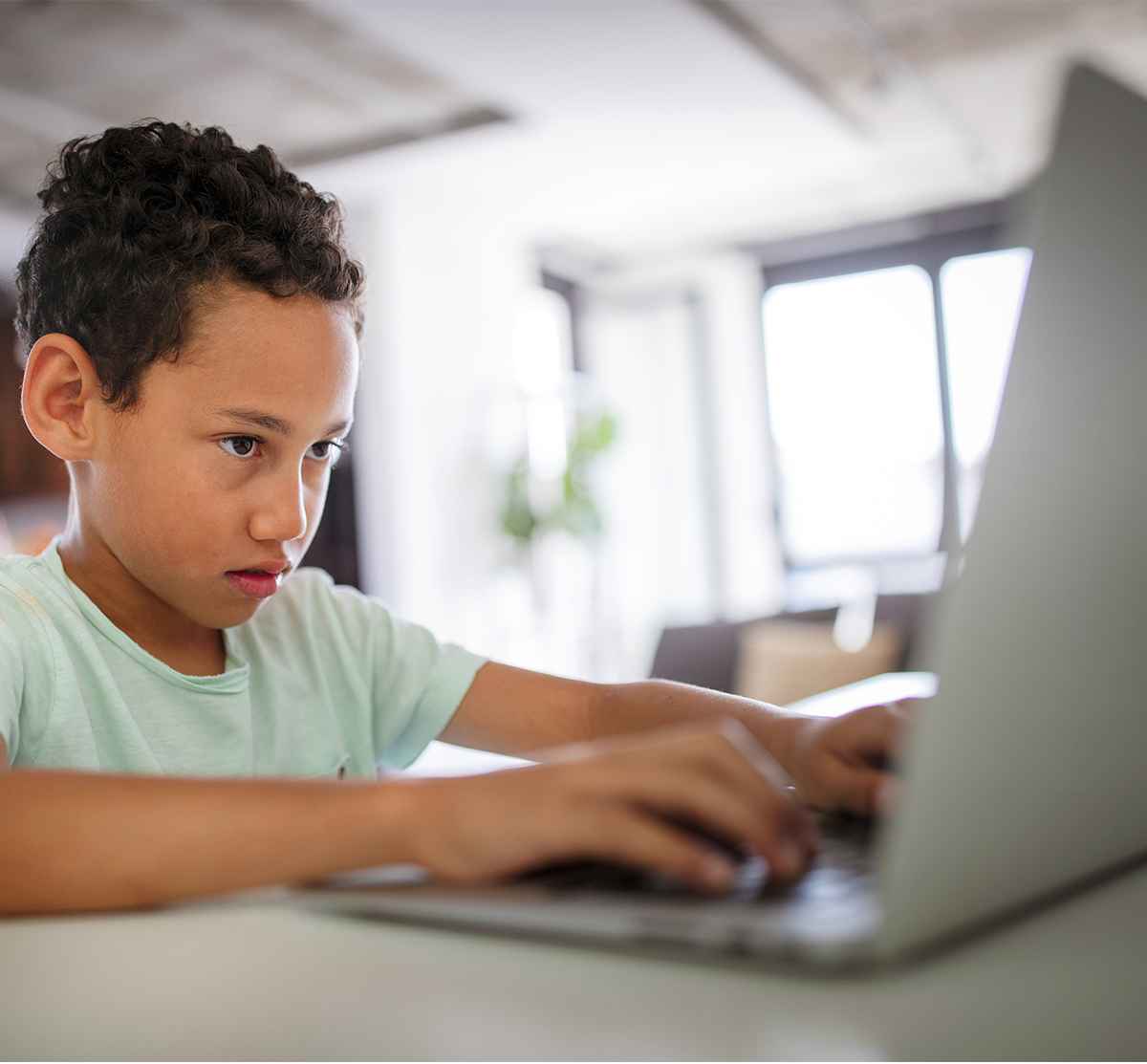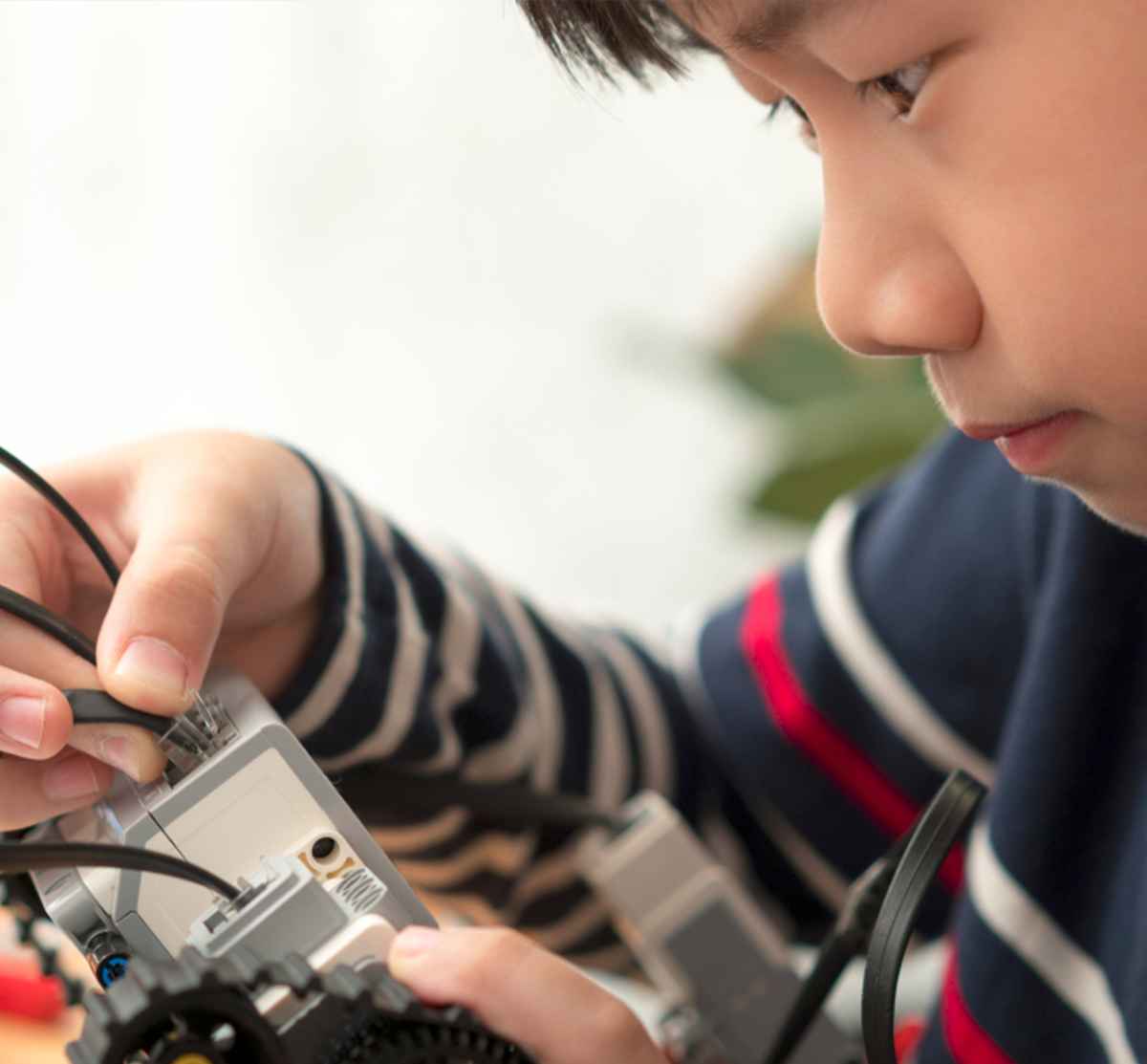The Future of Education Lies in Online Learning: Here’s Why
by Drone in Schools | January 2, 2021

In addition to economy and healthcare, the COVID-19 pandemic has brought a paradigm shift to education as well. Online learning has now become an integral part of education and seems irreversible, even when the pandemic is gone. Read to know why e-learning is the future of traditional education.
The Evolution of Education to Online Learning
Before the burst of this deadly virus, never had someone imagined the education system to rely completely on the internet. Digital platforms such as Google Meet, Zoom, and so on, seemed like an option only for international business meetings. Fast forward to today, the students across the globe are glued to their screens – not for addictive games or social media, but for education.
Online learning is a powerful tool to provide education to your kids as the sphere of everyone’s future life revolves around technology. Not just the regular school classes, e-learning has also paved way for an innovative learning environment for children. Interactive games, apps and extensive classes by subject matter experts are helping children learn life skills that are not integrated in their school curriculum.
Digitalization of Education: Countless Benefits for Kids
Although there may be some hindrances while learning away from the designated study environment of schools, there is no choice but to opt for virtual learning to keep the education going on. Looking at the positive side, there are endless benefits of online learning to help your child nurture his creative mind through education.
Here are a few benefits of learning digitally from home:
- Online learning helps students learn at their own pace because they are not physically present in a competitive atmosphere with other classmates.
- Parents can easily involve in the education of their children, contrary to the traditional classroom education.
- It is more convenient for students to plan their studies while carrying out their daily routine.
- More flexible, e-learning also promotes social distancing which is the need of the current times.
- Students from high school can also choose to pursue other distance learning courses or work from home while continuing their education online.
- Learning virtually gives access to modern educational tools that fosters learning at a faster pace.
- It also increases the students’ ability to memorize their concepts better.
- The use of interactive visuals while studying online also increases the concentration level and interests of the students.
Here’s How e-Learning is the Future of K–12 Education
With an extensive list of advantages, digital education is the new tool to educate aspiring students all over the world and combat geographical as well as physical barriers. This is a technological era and there could be nothing better than adopting technology into our education system. Online education has not only brought a transformation to the education methods but also has brought a new revolution to embrace our technological advancement and transition into the future rapidly.
Online learning has made possible many barriers that were not compatible in a classroom setting. Students are now more interested in their studies and are readily adapting to their virtual classes. It is evident from many studies that this digitalization has made students learn and perform at a faster pace. Online learning has strengthened the self-development of children and gives them the opportunity to gain more skills.
Kindergarten Kids
- E-learning advances the auditory and visual skills of pre-schoolers and kindergarteners.
- It also helps develop the interest of kids in learning because interactive visuals on a colourful screen are way better than boring 2D pictures in books.
- As parents, you must look for educational toys to foster hand-eye coordination and provide hands-on learning skills to your child.
Middle School Children
- With a drastic change in their regular school routines, middle schoolers have got more opportunities to seek within, find their interests, pursue their dream projects at home.
- Buying an interactive education kit for your children or providing them online training can help you understand their future goals at a young age.
High School Students
- Online education has made it easier for high-school graders to learn according to their style and carry out other interests at the same time.
21st Century Skills for Students | Prepare Thoughtful Future Leaders
by Drone in Schools | September 14, 2020

Want to get your child ready to propel into the advanced future? Confused about what skills to teach them for being successful in modern society? Read to know 21st century skills for students that you.
What are 21st Century Skills for Students?
As true to its name, the term “21st century skills for students” means a new and broad set of skills, knowledge, work habits and character traits needed to meet the rapid changes of the ever-changing technological world. Acquiring these skills is critically important for students to excel in this information-based economy in the future.
Not just they help a child learn and grow better but also improve the thinking and decision-making skills. 21st century skills for students make them ready for contemporary career options while making them socially responsible individuals. These skills need not only apply in the workplace but also in academics and various phases of life.
Importance of Learning 21st Century Skills
After a stressful day of studying, kids need refreshment too. And, there’s nothing better than indulging in activities that are educative, interesting and polish the 21 st century skills. If pursued with determination, some skills can transform from hobby to passion and career – to lead a successful life. So, here is why it is extremely crucial to teach 21st century skills for students for a better tomorrow:
- Keep you ready to meet the ongoing trends of globalization
- Improve critical thinking abilities
- Help you make more informed and the right decisions
- Foster adaptability to life issues
- Help in forming valuable networks and work in groups
- Enhance communication and social behavior
- Arouse curiosity and creativity
Crucial Skills that Prepare the Students for the New Global Economy
In this ever-evolving world, the global economy is getting more and more demanding. There is an emerging need for competent professionals with an international outlook. With the dawning of the technological era, the future lies in the hands of innovators with exceptional life skills.
These skills, however, go hand in hand and can be used together at many times. So, if you want to prepare the future leaders for the global economy, here are a few skills you must focus on teaching:
Innovation and Creativity Skills
Innovation has always been the staircase to human improvement and the doorway to success. Kids today need to be equipped with the ability to think out of the box and create new ideas. You can promote innovation and ideation of your child by providing all materials needed to foster his imagination. You should be involved in their creative learning process in every way possible and must always embrace their creations.
Information, Media & Technology Skills
The global IT industry is expected to generate a revenue of US$ 350 billion in the upcoming five years. Being the supportive pillars, the Media and Technology skills are an ocean of opportunities for 21st century kids. Learning one of these skills is sure to provide a promising future for today’s kids. IT skills like Quantum Physics, App Development, Web Designing, Creative Writing and more are some popular choices.
Career and Life Skills
To succeed in the competitive environment of today’s world, students need to develop skills beyond traditional education. These include problem-solving, critical thinking, communication, and collaboration. It's essential to equip students with these skills to ensure they are prepared for the future workforce.
Learning and Innovation Skills
Encouraging students to explore and think creatively is crucial for their overall development. Innovation and learning should be fostered from an early age to ensure they are ready to tackle future challenges with a unique perspective.
Hands On Learning: What, Why, How – Everything Explained
by Drone in Schools | September 12, 2020

Want to nurture your child’s creative brain? Looking for a way to enhance your young learner’s focus and see him excel? Introduce the concept of hands on learning in your child’s life and empower his imagination and knowledge. Read to know all about hands on learning to motivate your child to study better.
Hands On Learning: Boost Your Child’s Learning Pace
Can you teach a toddler to walk without getting them practising? Or, can you teach someone to dive without going underwater? Is it possible to ask a child to build circuits without actually making in front of him? Is a book enough to teach such skills? Of course, no! This is when hands on learning comes into play.
Hands on learning is the creative way of teaching a concept or skill to your child practically, rather than explaining him about it theoretically. For example, children might learn ordering numbers better by using “stairs linking blocks” as compared to the written concept. The term “hands on” is hence, used to involve children in physical activities to understand the concepts better.
Not just easier, it makes studying more fun and interactive. It has been scientifically proven that teaching a concept practically builds a strong foundation for higher education rather than just telling children about it and forcing them to cram.
Why Adopt Hands On Learning in Child Education?
If you want to reap the benefits of practical learning, you can implement some of these pointers:
- Hands on learning testifies the actual purpose of education to children.
- Children who are taught this way are better learners than those who don’t.
- With hands on learning, children use their senses and are more dedicated to finish the given task.
- Engaging all five senses in learning also makes students more interactive and explorative.
- Such children are more excited to learn new things and have a better attention span.
- This not only enhances the knowledge but also increases the concentration level and memory retention power.
- It also allows the child to learn from real-life experiences and get better critical thinking & decision making skills.
How to Promote Hands on Learning at a Young Age?
If you want to reap the benefits of practical learning, you can implement some of these pointers:
- Asking kids to solve problems as a part of math class.
- Completing a lab experiment as a part of a science class.
- Building circuits or working machines as a part of a tech class.
- Recreating a historical document or artifact as a part of history class.
- Writing a creative story, poem, or essay as a part of English class.
5 Spectacular Hands On Learning Tools
Some of the best hands on learning tools that you must get your hands on are:
- Building Blocks: Playing with blocks helps children develop their vocabularies, improves math skills, and even teaches them about gravity, balance, and geometry.
- DIY Kits: DIY activity kits help to teach kids new concepts, introduce science, technology, engineering, and give a practical example while teaching them theory.
- 3D Models: Learning with 3D models allows children to observe and understand better. They learn how to describe shapes, sizes, and positions as they build various models.
- Technology: Various educational applications for designing and coding can foster an interest in learning in students.
- Educational Kits: Electronics, robotics, and other kits aim to stimulate a child’s interest in a particular field through activities and competition.
Does Educational Toys Help in Hands On Learning?
Learning through educational toys is another great way to have fun and grab knowledge at the same time. Children not only make movements but also engage various parts of their brain while playing with such toys. Educational toys develop and enhance fine motor skills while instilling the value of good sportsmanship in them.
Eye-hand coordination as well as imagination are also improved when children are encouraged to play with educational toys. Most importantly, such toys teach children to interact socially and communicate better. These toys are one of the best ways to get kids practice and retain their knowledge each time.
Ready to Go Beyond Pencils?
When children learn practically, they get a better sense of knowledge and perform well in academics as well as in various phases of life. Hands-on learning should be incorporated into every child’s life to teach them about real-world situations through real-life examples. If you want your child to excel in life, it is time to involve in their learning and go beyond the traditional learning methods.
Overwhelmed by the activities and toys you must get? We have your back. Kitspire is your one-stop solution to engage your child in hands on learning through educational toys, kits, and online classes. Browse through our extensive range of interesting learning material for your creative bub!



